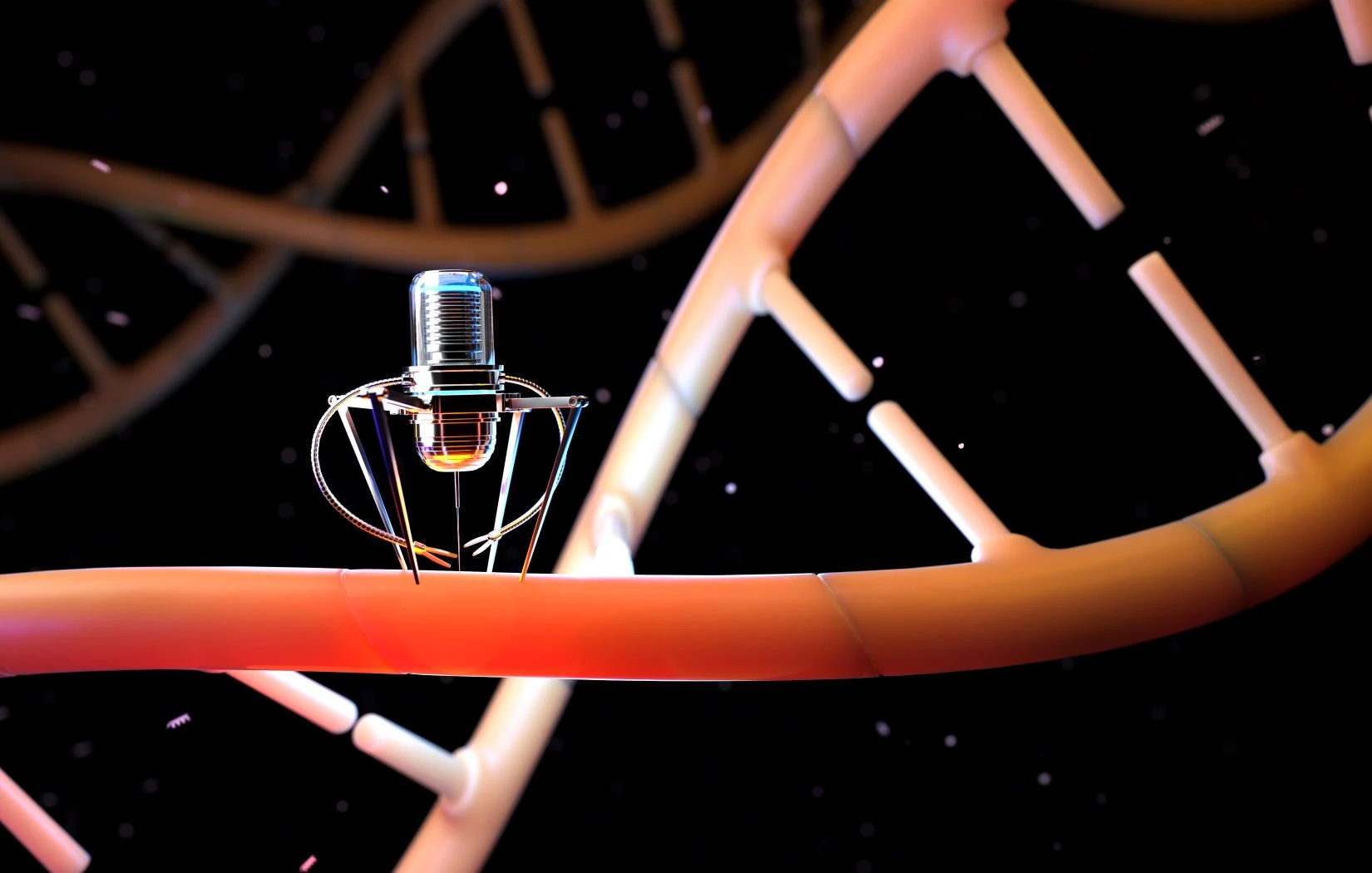Image by user6702303 on Freepik
We live in an era where the impossible is becoming increasingly possible, thanks to remarkable biotechnology breakthroughs. From gene editing to personalized medicine, biotechnological innovations are transforming the way we approach healthcare and other fields. Today, we’ll take a fascinating journey into the world of biotech breakthroughs and explore their potential to revolutionize our lives.
Let’s start by understanding what exactly biotechnology is. In essence, it involves using living organisms or their components to develop or make products. Think of it as harnessing the power of nature to create innovative solutions to some of our biggest challenges. Now, let’s take a look at some of the most exciting biotechnology breakthroughs in this field.
Gene Editing: Rewriting the Code of Life

One of the most groundbreaking biotechnology breakthroughs in recent years is the development of gene editing technologies, particularly CRISPR-Cas9. To understand its significance, imagine DNA as a complex instruction manual for building and maintaining a living organism. Now, picture yourself having the ability to precisely edit any sentence or even a single letter in this manual. That’s the power CRISPR-Cas9 bestows upon scientists.
CRISPR-Cas9 works like a pair of molecular scissors guided by a programmable RNA molecule. This RNA molecule acts as a GPS, leading the Cas9 enzyme to a specific location in the DNA. Once there, Cas9 cuts the DNA, allowing scientists to remove, add, or alter genetic material. This unprecedented level of precision has revolutionized genetic research and opened doors to previously unimaginable possibilities in healthcare.
CRISPR in Action: Real-World Applications
Sickle Cell Disease & Beta-Thalassemia: In a landmark moment, the FDA in December 2023 approved the first CRISPR-based gene editing therapy for sickle cell disease and beta-thalassemia, called Casgevy. This treatment has shown promising results in clinical trials, with some patients experiencing a significant reduction or even elimination of their symptoms.
Cancer Immunotherapy: Scientists are exploring the use of CRISPR to enhance the body’s immune system to fight cancer. By modifying immune cells to recognize and attack cancer cells more effectively, CRISPR could potentially lead to more powerful and personalized cancer treatments.
Inherited Blindness: In 2017, the FDA approved the first-ever gene therapy for a form of inherited blindness called Leber congenital amaurosis. This groundbreaking treatment uses a harmless virus to deliver a corrected gene to the patient’s eye cells, restoring some vision.
Beyond CRISPR-Cas9
Researchers are constantly refining CRISPR technology and developing new techniques. Base editing and prime editing, for example, offer even greater precision and control over gene editing, minimizing unintended changes to the DNA.
The Promise of Personalized Medicine
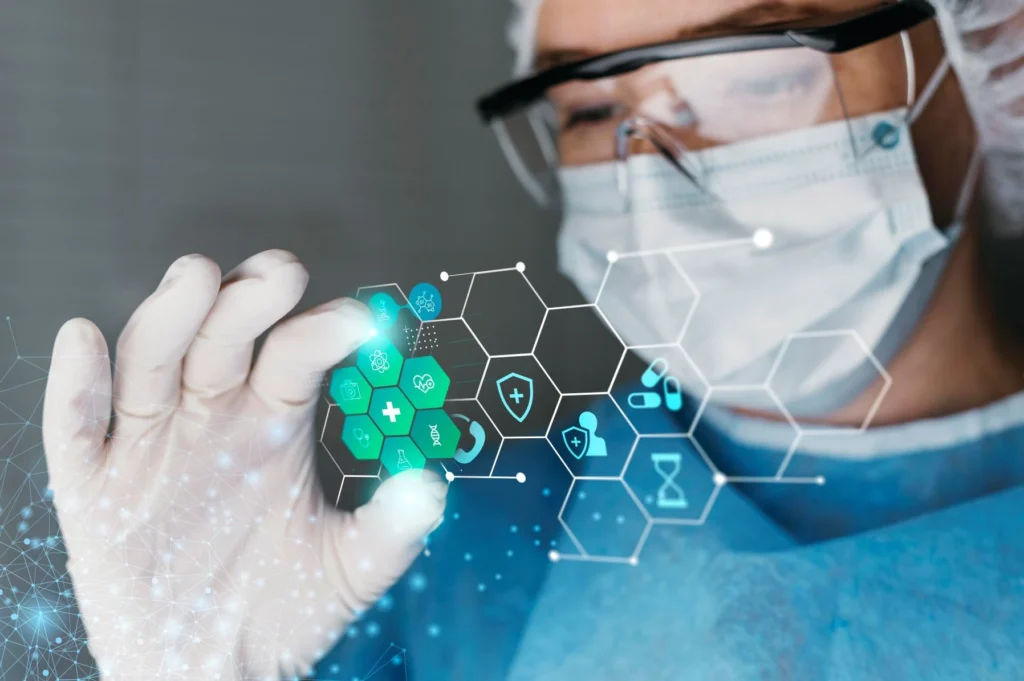
Another exciting frontier in biotechnology is personalized medicine, sometimes called precision medicine. This approach tailors medical treatment to the specific needs of each patient, moving away from the traditional “one-size-fits-all” model. Think of it as bespoke tailoring for your health – a healthcare plan uniquely crafted for you.
The Power of Genomics
At the heart of personalized medicine lies genomics, the study of our genes and how they interact with each other and our environment. With advances in DNA sequencing technology, it’s now possible to map an individual’s entire genetic code quickly and affordably. This wealth of information allows doctors to:
- Predict disease risk: By identifying genetic variations associated with certain diseases, doctors can assess a patient’s susceptibility and recommend preventive measures.
- Choose the right treatment: Genetic information can help determine how a patient will respond to different medications, allowing doctors to choose the most effective treatment with the fewest side effects.
- Avoid adverse drug reactions: Certain genetic variations can make individuals more likely to experience adverse reactions to specific medications. Personalized medicine can help identify these risks and guide doctors toward safer alternatives.
Beyond Genomics: The Multi-Omics Approach
While genomics is crucial, personalized medicine also draws upon other “omics” fields:
- Proteomics: The study of proteins, the workhorses of our cells, can reveal insights into disease processes and potential drug targets.
- Metabolomics: By analyzing the small molecules involved in metabolism, scientists can gain a deeper understanding of how the body processes drugs and nutrients, further refining personalized treatment plans.
The Role of AI and Machine Learning
Artificial intelligence (AI) and machine learning (ML) are playing an increasingly important role in personalized medicine. These technologies can analyze vast amounts of genomic and other “omics” data to identify patterns and predict disease risk, treatment response, and potential side effects. This helps doctors to make more informed decisions about patient care.
Liquid Biopsies: A New Frontier
Liquid biopsies are minimally invasive tests that can detect cancer DNA in the blood. They are being used for early cancer detection, monitoring treatment response, and detecting recurrence. This is another exciting development in personalized medicine that holds great promise for improving cancer care.
Real-World Impact
Personalized medicine is already making a difference in several areas of healthcare. For instance:
- Cancer Treatment: Oncologists are increasingly using genetic profiling of tumors to guide treatment decisions, leading to improved outcomes for many cancer patients.
- Rare Diseases: Personalized medicine offers hope for individuals with rare diseases, many of which have a genetic basis. By targeting the underlying genetic cause, scientists are developing new and more effective therapies.
- Pharmacogenomics: This field focuses on how genes affect a person’s response to drugs. By understanding these genetic variations, doctors can prescribe medications more precisely, reducing the risk of adverse reactions and improving treatment effectiveness.
Challenges and the Road Ahead
While the potential of personalized medicine is immense, challenges remain. The sheer volume of genetic and other “omics” data can be overwhelming, requiring sophisticated analysis tools and skilled professionals to interpret. Data privacy and the potential for genetic discrimination are also significant concerns. Plus, personalized treatments can be expensive, raising questions about accessibility and affordability.
Despite these hurdles, personalized medicine is rapidly advancing, promising a future where healthcare is more precise, effective, and tailored to each individual’s unique needs. It’s a testament to the power of biotechnology to revolutionize not just medicine but the very way we approach health and well-being.
Beyond Healthcare: Biotechnology’s Expanding Impact
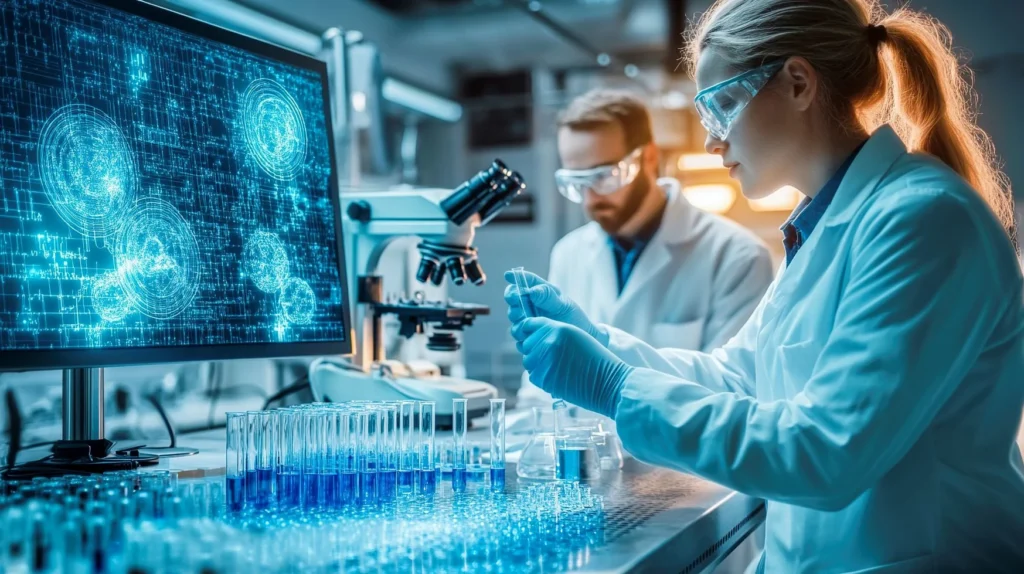
While the potential of biotechnology to transform healthcare is undeniable, its impact is far from limited to the medical field. In fact, biotechnological innovations are revolutionizing various industries and contributing to a more sustainable and prosperous future.
Agriculture: Cultivating a Better Future
Biotechnology is playing a crucial role in addressing the challenges of feeding a growing global population while minimizing environmental impact. Through genetic engineering, scientists are developing crops that are:
- Drought-resistant: Crops that can thrive in arid conditions can help farmers in regions facing water scarcity, ensuring a stable food supply even in challenging climates.
- Pest and Disease Resistant: By introducing genes that confer resistance to pests and diseases, biotechnologists are helping farmers reduce their reliance on chemical pesticides, promoting a healthier environment and safer food.
- Nutritionally Enhanced: Golden Rice, enriched with beta-carotene (a precursor of Vitamin A), is a prime example of how biotechnology can enhance the nutritional value of staple crops, addressing micronutrient deficiencies in vulnerable populations.
Energy: Fueling a Sustainable Tomorrow
The quest for clean and renewable energy sources has led scientists to explore the potential of biotechnology in this domain.
- Biofuels: Microorganisms like algae and bacteria can be engineered to produce biofuels, such as biodiesel and bioethanol, offering a sustainable alternative to fossil fuels.
- Biogas: Organic waste, such as agricultural residues and food scraps, can be converted into biogas through anaerobic digestion, providing a renewable source of energy and reducing greenhouse gas emissions.
- Bioelectricity: Certain bacteria can generate electricity through a process called microbial fuel cells, offering a potential source of clean energy for various applications.
Environmental Protection: A Greener Planet
Biotechnology also plays a vital role in protecting our environment and addressing pollution.
- Bioremediation: Microorganisms can be used to clean up contaminated sites, such as oil spills and industrial waste, through a process called bioremediation.
- Bioplastics: Scientists are developing biodegradable plastics made from renewable resources, offering a sustainable alternative to traditional petroleum-based plastics that contribute to pollution.
- Biosensors: These devices use biological components to detect and monitor environmental pollutants, helping us track and mitigate pollution levels in air, water, and soil.
Synthetic Biology: Designing the Future
A particularly exciting and emerging field within biotechnology is synthetic biology. It involves the design and construction of new biological parts, devices, and systems or even the redesign of existing, natural biological systems for useful purposes. It has the potential to create new biofuels, medicines, and materials. It could even be used to create entirely new life forms with specific functions, such as bacteria, that can detect and break down environmental pollutants.
The applications of synthetic biology are vast and hold immense promise for addressing global challenges.
The Ethical Considerations: Navigating the Complexities
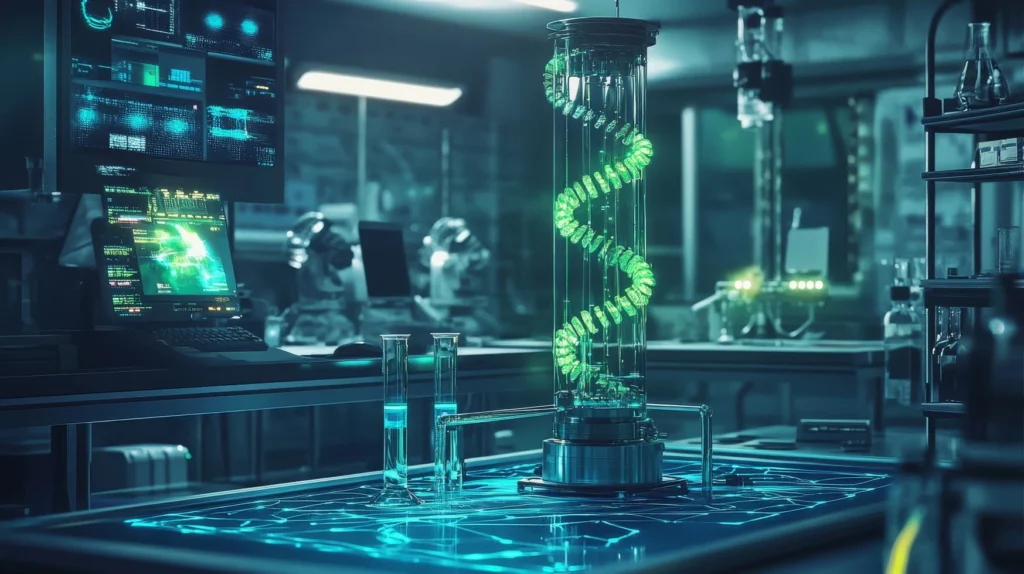
Biotechnology’s power to reshape our world raises profound ethical questions that demand careful consideration.
The ‘Designer Baby’ Dilemma
The ability to edit genes, particularly in human embryos (germline editing), has sparked intense debate. While it holds the potential to eliminate devastating genetic diseases, it also raises the specter of “designer babies,” where parents could choose traits like intelligence or athletic ability. This raises concerns about worsening social inequalities and fundamentally altering the human gene pool.
Balancing Benefits and Risks
The use of genetically modified organisms (GMOs) in agriculture is another area fraught with ethical considerations. While GMOs can increase crop yields, improve nutrition, and reduce pesticide use, concerns persist about their long-term impact on human health and the environment. The potential for gene flow from GM crops to wild relatives or other crops raises concerns about biodiversity and ecological balance.
The Accessibility Question
As with many technological advancements, the issue of accessibility looms large. Will the benefits of biotechnology be equitably distributed, or will they primarily serve those with the means to afford them? Ensuring that these innovations are accessible to all, regardless of socioeconomic status, is a crucial ethical challenge.
Global Perspectives on Regulation
The regulatory landscape surrounding biotechnology, particularly GM crops, varies across the globe. The European Union, for instance, employs a stricter regulatory process than the US and Canada, reflecting a more cautious approach to biotechnology. This highlights the need for global collaboration and harmonization to ensure the responsible and ethical development and use of these technologies.
The Future of Biotechnology: A World of Possibilities
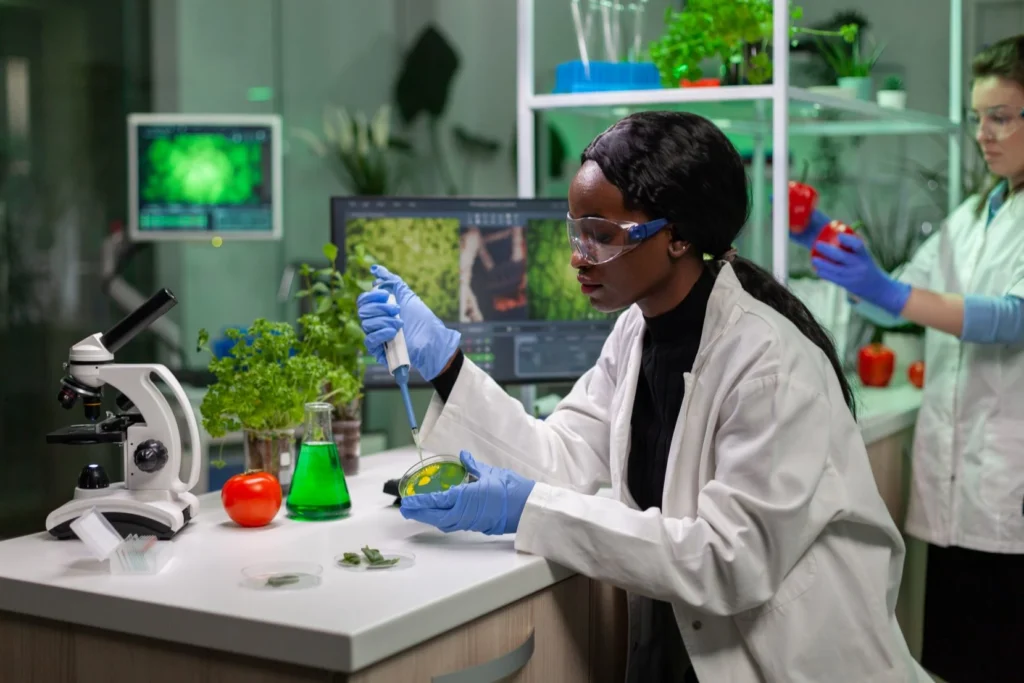
As research progresses and new discoveries are made, we can expect even more groundbreaking advancements that will reshape our world in ways we can only imagine. The advancements we’ve discussed so far are just a glimpse of what’s to come. Let’s explore some of the most exciting possibilities on the horizon.
Artificial Organs and Tissues: The Next Frontier
Imagine a world where organ transplants are a thing of the past. Scientists are making significant strides in developing artificial organs and tissues that can seamlessly integrate with the human body. From 3D-printed hearts to lab-grown skin, these innovations could revolutionize the treatment of organ failure and traumatic injuries, offering hope to millions of patients worldwide.
Brain-Computer Interfaces: Merging Minds and Machines
The idea of controlling computers and other devices with our thoughts may sound like science fiction, but it’s closer to reality than you might think. Brain-computer interfaces (BCIs) are devices that can translate brain signals into commands, allowing individuals to interact with technology using their minds. BCIs hold tremendous potential for people with paralysis or other disabilities, enabling them to regain mobility and independence. Beyond medical applications, BCIs could also revolutionize the way we interact with computers and the digital world, opening up new realms of communication and creativity.
Synthetic Biology: Redesigning Life
Synthetic biology, an emerging field that involves the design and construction of new biological parts, devices, and systems, is pushing the boundaries of what’s possible in biotechnology. Scientists are now able to create entirely new organisms with specific functions, such as bacteria, that can produce biofuels or detect environmental pollutants. Synthetic biology holds immense promise for addressing global challenges, from developing new medicines to creating sustainable solutions for energy and environmental protection.
The Path Forward: Embracing a Biotechnological Future
Biotechnology is a rapidly evolving field with the potential to transform our world in unprecedented ways. From conquering diseases to feeding a growing population and protecting our planet, the possibilities are endless. However, as we embrace these advancements, it’s crucial to proceed with caution, ensuring that ethical considerations and equitable access are at the forefront of our endeavors. By fostering open dialogue, responsible research, and thoughtful regulation, we can harness the power of biotechnology to create a brighter and more equitable future for all.
FAQs
What exactly is biotechnology?
Biotechnology harnesses the power of living organisms or their components to develop products or solve problems. It’s like using nature’s toolbox to create innovative solutions in healthcare, agriculture, environmental protection, and more.
What is CRISPR and how does it work?
CRISPR-Cas9 is a revolutionary gene editing technology that acts like molecular scissors, allowing scientists to precisely cut and modify DNA. It works by using a guide RNA molecule to target a specific location in the DNA, where the Cas9 enzyme makes the cut. This enables the removal, addition, or alteration of genetic material with unprecedented accuracy.
What are some real-world applications of CRISPR?
CRISPR is already making a difference in several areas:
- Treating genetic diseases: The FDA recently approved the first CRISPR-based gene editing therapy for sickle cell disease and beta-thalassemia. Clinical trials are underway for other genetic disorders.
- Fighting cancer: CRISPR is being used to enhance the immune system’s ability to recognize and destroy cancer cells.
- Developing new diagnostic tools: CRISPR-based diagnostics can rapidly and accurately detect diseases.
What are the potential benefits and risks of gene editing?
Potential Benefits:
- Curing genetic diseases
- Developing new treatments for cancer and other diseases
- Improving crop yields and nutrition
- Creating sustainable energy sources
Potential Risks:
- Unintended consequences of gene editing
- Ethical concerns about “designer babies”
- Potential for genetic discrimination
How is personalized medicine changing healthcare?
Personalized medicine tailors medical treatment to the individual needs of each patient. By analyzing a person’s genes, proteins, and other molecules, doctors can:
- Predict disease risk
- Choose the most effective treatments
- Avoid adverse drug reactions
What is synthetic biology and what are its applications?
Synthetic biology involves designing and building new biological parts, devices, and systems. It has the potential to:
- Create new biofuels, medicines, and materials
- Engineer organisms with specific functions, such as bacteria that can detect and break down pollutants
- Develop artificial cells and organelles

